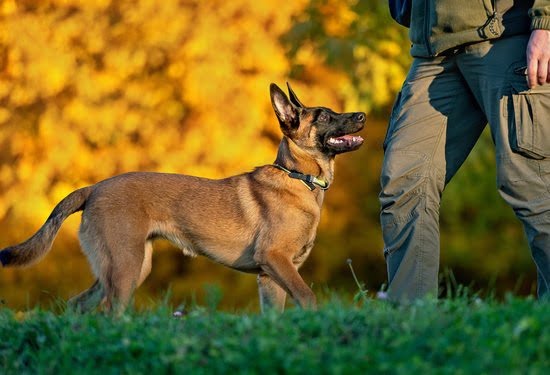Are you struggling with a dog who can’t seem to resist stealing food? In this article, we’ll discuss how to train your dog not to steal food and address the potential dangers this behavior poses to their health and overall behavior.
Understanding the root of the problem is essential in finding effective solutions, so let’s explore the reasons behind this natural instinct in dogs and the associated behavioral patterns. By establishing clear boundaries and using positive reinforcement training, you can effectively deter your dog from stealing food.
Dogs have a natural instinct to scavenge for food, which can lead them to steal from kitchen counters or even directly from people’s hands. This behavior not only poses health risks due to consuming inappropriate or potentially harmful foods but also presents behavioral problems related to impulse control.
Establishing rules and boundaries during feeding time is crucial for teaching your dog good manners around food. With positive reinforcement training techniques, such as rewarding your dog for leaving food alone, you can effectively discourage them from stealing food.
Creating a consistent feeding routine will help prevent dogs from feeling the need to snatch food when it becomes available. Obedience commands like “leave it” or “stay” can also be utilized as part of training to discourage your dog from attempting to steal food. Additionally, implementing proper food management techniques and addressing any underlying behavioral issues will contribute significantly to successfully training your dog not to steal food.
Understanding the Root of the Problem
Dogs are known for their love of food, and it’s not uncommon for them to exhibit behaviors such as begging or scavenging for scraps. However, the act of stealing food goes beyond just a desire for a tasty treat. It is essential to understand the root of this problem to effectively train your dog not to steal food.
One reason dogs have a natural instinct to steal food is due to their history as hunters and scavengers. In the wild, dogs would need to search for and compete for food, leading them to develop behaviors that involve taking or hiding food. This instinct can carry over into domesticated settings, causing some dogs to display behaviors like stealing food from counters, tables, or even directly from their owner’s hands.
In addition to their natural instincts, there are other behavioral patterns associated with the tendency of dogs to steal food. Often times, dogs will steal food simply because it’s a rewarding behavior that has been inadvertently reinforced in the past. For example, if a dog has successfully stolen food in the past and received attention or a treat as a result, they may continue to repeat this behavior in an attempt to gain rewards.
To address these issues and train your dog not to steal food, it is essential first to understand why they engage in this behavior. By doing so, you can then implement effective training techniques that specifically target these underlying reasons. Whether it’s through positive reinforcement training or establishing clear boundaries around mealtimes, addressing the root of the problem is crucial in preventing your dog from stealing food in the future.
- Use positive reinforcement techniques such as praise, treats, or toys when your dog displays appropriate eating behaviors
- Set clear boundaries around feeding times and establish rules about where your dog can and cannot access food
- Consider consulting a professional trainer if your dog’s behavior does not improve despite consistent training efforts
Establishing Clear Boundaries
One way to prevent dogs from stealing food is by setting clear rules and boundaries around feeding time. This includes establishing designated feeding areas, feeding your dog at specific times, and ensuring that everyone in the household follows the same routine. By doing so, you are establishing a sense of structure and predictability for your dog, which can help prevent them from feeling the need to steal food.
Additionally, it’s important to teach your dog that they must wait for permission before approaching their food. You can achieve this by implementing obedience training commands such as “wait” or “stay” during mealtime. Consistently using these commands during feeding time will help reinforce the idea that they must respect your authority when it comes to accessing their food.
It’s also essential to educate everyone in the household about the importance of not leaving food within easy reach of the dog. This means keeping countertops clear of any edible items, making sure trash cans are securely closed, and never leaving food unattended. By establishing these rules and consistently enforcing them, you can effectively train your dog not to steal food.
| Feeding Time Boundaries | Importance |
|---|---|
| Designated feeding area | Establishes structure and predictability |
| Obedience commands | Teaches dogs to wait for permission before approaching their food |
| Awareness in households | Educating everyone about not leaving food within reach |
Positive Reinforcement Training
Understanding Positive Reinforcement
Positive reinforcement is a training technique that involves rewarding desired behaviors to increase the likelihood of those behaviors being repeated. In the context of preventing food stealing behavior in dogs, positive reinforcement can be used to encourage them to exhibit appropriate conduct around food and feeding time. By rewarding your dog with treats, praise, or other forms of positive reinforcement when they refrain from stealing food, you can effectively train them to understand what behavior is expected of them.
Implementing Positive Reinforcement for Food Training
When implementing positive reinforcement to train dogs not to steal food, it’s important to be consistent and patient. Start by identifying specific behaviors you want to reinforce, such as waiting patiently during mealtime or avoiding snatching food from the table. Whenever your dog displays the desired behavior, immediately reward them with a treat or verbal praise. Over time, this will help them form a positive association with following the rules around food and feeding.
Reinforcing Boundaries With Positive Rewards
In addition to using positive reinforcement for specific training exercises, it’s essential to consistently reinforce boundaries and rules related to food access. This includes establishing designated feeding areas, using commands like “leave it” or “stay” when necessary, and ensuring that all family members are on board with the training approach.
By consistently applying positive reinforcement techniques within a structured framework, you can effectively teach your dog not to steal food while promoting a healthy and respectful relationship between you and your pet.
By understanding how positive reinforcement works and implementing it consistently in your training efforts, you can effectively address and correct food stealing behavior in your dog. With patience, dedication, and clear communication, you can establish a positive routine that encourages appropriate conduct around food while nurturing a strong bond with your canine companion.
Creating a Consistent Feeding Routine
One of the main reasons dogs steal food is due to hunger or feeling unsure about when their next meal will be. Establishing a consistent feeding routine can help eliminate these uncertainties and provide them with a sense of security. It’s important to feed your dog at the same times each day and avoid leaving food out for them to free-feed as this can lead to overeating or sneaking extra snacks.
When implementing a feeding schedule, it’s crucial to ensure that the portion sizes are appropriate for your dog’s size, age, and activity level. Overfeeding or underfeeding can lead to behavioral issues such as stealing food, so consulting with your veterinarian about the right amount of food for your dog is essential. By providing consistently timed meals with proper portions, you can help curb their instinct to steal food.
Another important aspect of creating a consistent feeding routine is ensuring that everyone in the household follows the same schedule and rules. Inconsistencies in feeding times or allowing different family members to provide extra treats outside of mealtime can confuse your dog and make it harder for them to understand boundaries. By maintaining a unified approach, you can reinforce good behavior and discourage food stealing tendencies in your pet.
| Feeding Routine Benefits | Consistent Schedule Tips |
|---|---|
| Prevents dogs from feeling hungry and anxious about their next meal | Feed at the same times each day |
| Can improve overall health by regulating portion sizes | Avoid free-feeding |
| Promotes positive behavior by establishing clear boundaries | Consult with vet for appropriate portion sizes |
Using Obedience Commands
Introduction to Obedience Training Commands
One of the most effective ways to train a dog not to steal food is by using obedience training commands. Commands such as “leave it” or “stay” can be valuable tools in teaching your dog proper behavior around food. These commands are designed to help your dog understand what is acceptable behavior and what is not when it comes to food.
Teaching the “Leave It” Command
The “leave it” command can be especially useful in preventing dogs from stealing food. To teach this command, start by holding a treat in your hand and letting your dog sniff it. Then close your fist and wait for them to stop trying to get the treat.
As soon as they stop, say “leave it,” and then reward them with a different treat from your other hand. With consistent practice, your dog will learn that “leave it” means they should not touch the item in question.
Utilizing the “Stay” Command During Feeding Time
The “stay” command can also be helpful in preventing dogs from stealing food during feeding time. Start by using the command when placing their food bowl down and only allowing them to approach and eat once given permission. Gradually increase the duration of time between placing the bowl down and giving permission for them to eat. This will reinforce patience and self-control, reducing their impulse to steal food.
By incorporating these obedience training commands into your routines, you can effectively discourage your dog from stealing food while also promoting positive behavior around mealtimes. Consistency and patience are key when implementing these techniques, but with time and effort, you can successfully train your dog not to steal food.
Implementing Food Management Techniques
When it comes to preventing dogs from stealing food, implementing effective food management techniques can make a significant difference. By managing food access and storage in your home, you can minimize the temptation for your dog to indulge in unauthorized snacks. Here are some practical tips for managing food to prevent dogs from being able to steal it easily:
1. Store food securely: Make sure that all human and pet food is stored securely in containers or cabinets that are out of your dog’s reach. This includes keeping leftovers and snacks out of reach as well.
2. Avoid leaving food unattended: It may seem obvious, but one of the easiest ways for a dog to snatch food is when it is left unattended. Whether it’s on the kitchen counter or dining table, be sure to keep an eye on any food items when your dog is around.
3. Use feeding puzzles and interactive toys: Consider using feeding puzzles and interactive toys to engage your dog during meal times. These tools not only provide mental stimulation for your dog but also make them work for their food, which can reduce their inclination to steal.
By following these simple yet effective tips for managing food access and storage, you can help prevent your dog from being able to steal food easily. Consistency is key in implementing these techniques, so be sure to maintain these practices in your daily routine with your furry friend.
Addressing Underlying Behavioral Issues
Dogs stealing food can sometimes be a result of underlying behavioral issues that need to be addressed in order to effectively train them not to engage in this behavior. One common reason for food stealing is separation anxiety. Dogs that experience anxiety when left alone may resort to stealing food as a way to cope with the stress of being separated from their owners. Addressing separation anxiety through training and providing comfort can help reduce the likelihood of food stealing.
Another potential underlying issue that contributes to food stealing behavior is resource guarding. Some dogs may feel the need to protect their food or steal food as a way of securing valuable resources.
This behavior often stems from insecurity or fear, and it is important for dog owners to address this issue through proper training and desensitization techniques. Teaching the dog that resources are not scarce and that there is no need to guard or steal food can help alleviate this behavior.
In some cases, medical issues such as dietary deficiencies or digestive problems can also lead to food stealing behavior in dogs. It is important for dog owners to consult with a veterinarian to rule out any medical reasons for the behavior and address any underlying health issues.
Once medical concerns have been addressed, incorporating proper nutrition into their diet may help reduce the urge to steal food. By addressing these underlying behavioral issues, dog owners can take proactive steps towards effectively training their dogs not to steal food.
Overall, addressing potential underlying behavioral issues is crucial in preventing dogs from engaging in food-stealing behavior. Understanding the root causes of this behavior and implementing appropriate training techniques can help improve your dog’s overall well-being and prevent potential dangers associated with stealing food.
Conclusion and Next Steps
In conclusion, training a dog not to steal food requires understanding the root of the problem and implementing consistent training techniques. It is essential to recognize that dogs have a natural instinct to seek out food, and addressing this behavior requires patience and consistency. By establishing clear boundaries, using positive reinforcement, creating a consistent feeding routine, implementing obedience commands, and managing food access, dog owners can effectively train their dogs not to steal food.
One of the key factors in successfully training a dog not to steal food is positive reinforcement. By rewarding good behavior and consistently discouraging food stealing, dogs can learn to associate obeying commands with positive outcomes. Additionally, establishing a regular feeding schedule helps prevent dogs from feeling the need to steal food, as they know when their next meal will be. Using obedience commands such as “leave it” or “stay” can also be effective in discouraging dogs from stealing food.
It is important for dog owners to understand that addressing underlying behavioral issues may be necessary in some cases. Consulting with a professional trainer or behaviorist can provide valuable insight into any potential concerns and offer personalized guidance for addressing specific issues related to food stealing behavior. With patience, consistent training, and proactive management techniques, dog owners can successfully train their dogs not to steal food and ensure their health and well-being.
Frequently Asked Questions
How Do You Discipline a Dog for Stealing Food?
Discipline a dog for stealing food by implementing positive reinforcement for good behavior and redirecting their attention with a command or toy. Avoid punishment as it may cause fear or aggression.
Why Is My Dog Always Trying to Steal Food?
Dogs may constantly try to steal food due to lack of proper training, boredom, or anxiety. They are also naturally scavengers, so they are drawn to the smell of food.
How Do I Stop My Dog From Scavenging for Food?
To stop your dog from scavenging for food, make sure they are getting enough nutrition through regular meals and provide interactive toys to keep them mentally stimulated. Also, train them to respond to commands like “leave it” to prevent food stealing behavior.

Welcome to the blog! I am a professional dog trainer and have been working with dogs for many years. In this blog, I will be discussing various topics related to dog training, including tips, tricks, and advice. I hope you find this information helpful and informative. Thanks for reading!





